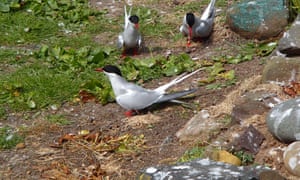 A tiny bird from the Farne Islands off Northumberland has clocked up the longest migration ever recorded. The Arctic tern’s meandering journey to Antarctica and back saw it clock up 59,650 miles, more than twice the circumference of the planet.
A tiny bird from the Farne Islands off Northumberland has clocked up the longest migration ever recorded. The Arctic tern’s meandering journey to Antarctica and back saw it clock up 59,650 miles, more than twice the circumference of the planet.
The bird, which weighs just 100g, left its breeding grounds last July and flew down the west coast of Africa, rounded the Cape of Good Hope into the Indian Ocean and arrived in Antarctica in November. Its mammoth trek was recorded by a tiny device attached to its leg, weighing 0.7g - too light to affect its flight.
“It’s really quite humbling to see these tiny birds return when you consider the huge distances they’ve had to travel and how they’ve battled to survive,” said Richard Bevan at Newcastle University and part of the tracking team.
The birds survive the vast journey by dipping down to the sea surface to catch fish and other food as they travel. “They live in the fast lane all the time, constantly on the move,” said Bevan. “They have to flap all the time. It is an incredibly energetic lifestyle.”read more

No comments:
Post a Comment